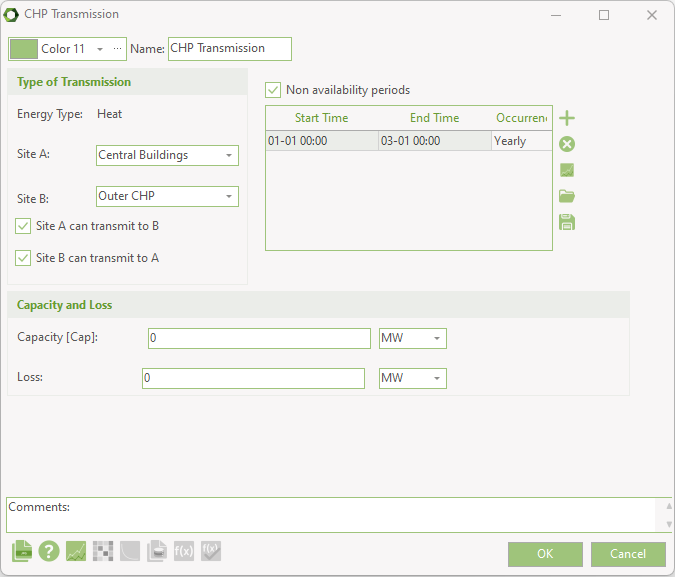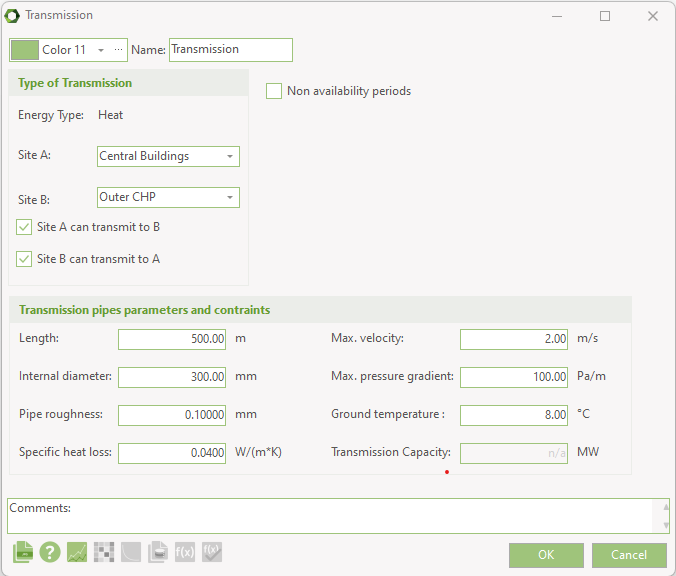Transmissions
The Transmissions section on the left-hand vertical menu allows access to all the transmissions between sites in the project. Each transmission is defined by the following attributes:
- Energy type, which can be transmitted: Heat, Cooling and Process Heat.
- The two sites that the transmission is connected to.
- Attribute that tells in what directions the energy can be transmitted.
The capacity and loss of the transmission can be set either by standard settings, where defined by values or formulas or by hydraulic settings, such as length, diameter, temperatures, etc.
Standard transmission
For a standard transmission, you set the following two variables.
- The capacity of the transmission, which can be defined by functions and time series. The capacity is the same in both directions.
- The loss on the transmission, which can also be defined by functions and time series. In the current version of energyPRO the loss is not relative to the amount of energy transmitted, but merely a constant (can vary over time) loss Transmissions are added to the project as described in Reference, Sites, Temperatures.

Hydraulic transmission
When having enabled “Hydraulic Transmission” in the "Enable advanced features" section of the "Calculation Setup" tab, you have the option of selecting the standard transmission (simple) or hydraulic, where the capacity and loss box is replaced with a Transmission pipes parameters and constraints box, see below.
Here you have to enter the following inputs:
- Length
- Internal diameter
- Pipe roughness
- Specific heat loss
- Max. velocity
- Max. pressure gradient
- Ground temperature (as a formula field)

WorkOfPumps function in payments
When enabling Including pressure and velocity hydraulic constraints in transmission pipes, a new payment function is available when setting up a user defined payment, called WorkOfPumps(Transmission). The new function reflects the work of pumps for the specified transmission based on the pressure calculation in each time step. The calculation of work of pumps is shown in Methods, Hydraulic Transmission, Pumps.
Restricting when transmissions can be used
There are two different ways of restricting the use of transmissions:
- Non availability periods: This option can be used for yearly maintenance periods where the transmission is not available. In the example it can be seen that the transmission is unavailable every year from the 1st of January until the 3rd of January.
- Operation restricted to period: If a transmission is not available from the beginning of the planning period this option can be used to define when the transmission will be available.
What about fuel and electricity transmissions?
In the current version of energyPRO it is not possible to restrict transmission of Electricity and Fuel between the sites. This means that all sites are connected to each other with Electricity and Fuel transmissions. So if you have a restricted Fuel it will be available on all sites and the storage is common for all of them.
In the same way an electricity producing unit can produce electricity for an electricity demand on another site.